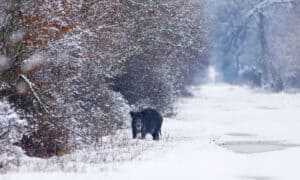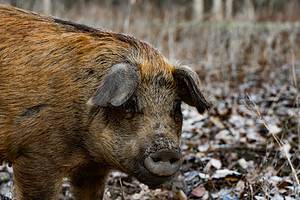Louisiana has one of the highest estimated populations of wild hogs in the country at 750,000. They are found throughout the entire state, usually in rural areas. Hog hunting is a popular activity for people in the state. It’s also a very beneficial activity because hog populations are extremely high. High hog populations can be dangerous because of the damage they cause, the diseases they carry, and the resources they steal from native animals.
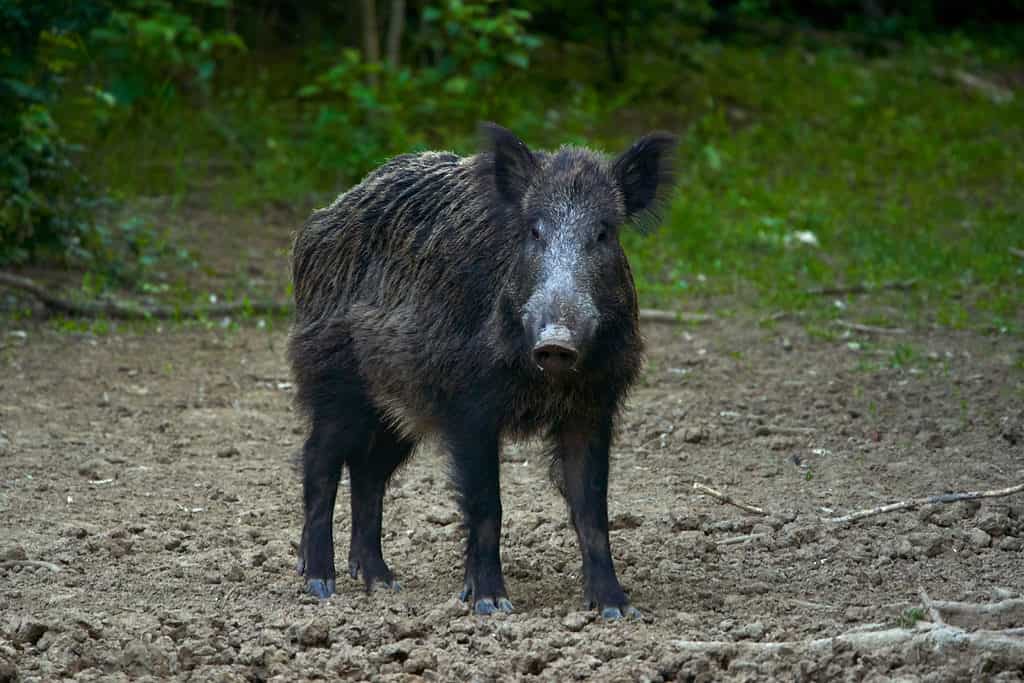
Louisiana has one of the highest populations of wild hogs in the country.
©Slatan/Shutterstock.com
Can You Hunt Wild Hogs in Louisiana?
It is legal to hunt wild hogs in Louisiana year-round as long as certain conditions are met. There are no bag limits on these animals. Hunters must hold a valid hunting license in the state of Louisiana. They must harvest the hogs during daylight hours in a legal area. Public lands have varying rules on hog harvest, so it’s best to look at the specific area where you’ll be hunting.
Private landowners have the right to harvest hogs at any time of day or night. Others who would like to hunt on private land can also do so with written permission and the contact information of the landowner in their possession. Hogs can be hunted at night with any legal weapons as well as the aid of artificial light, like flashlights and infrared. Anyone who plans to hunt for hogs at night must inform their sheriff’s office 24 hours in advance or immediately after taking a hog. They also must state which parish the property they are hunting is in.
Aerial hog hunts are also legal in the state. This is when people use helicopters to hunt for hogs. Helicopters make it easier to spot the animals over large pieces of terrain. It also makes it so that hunters can take multiple specimens in a short period of time.
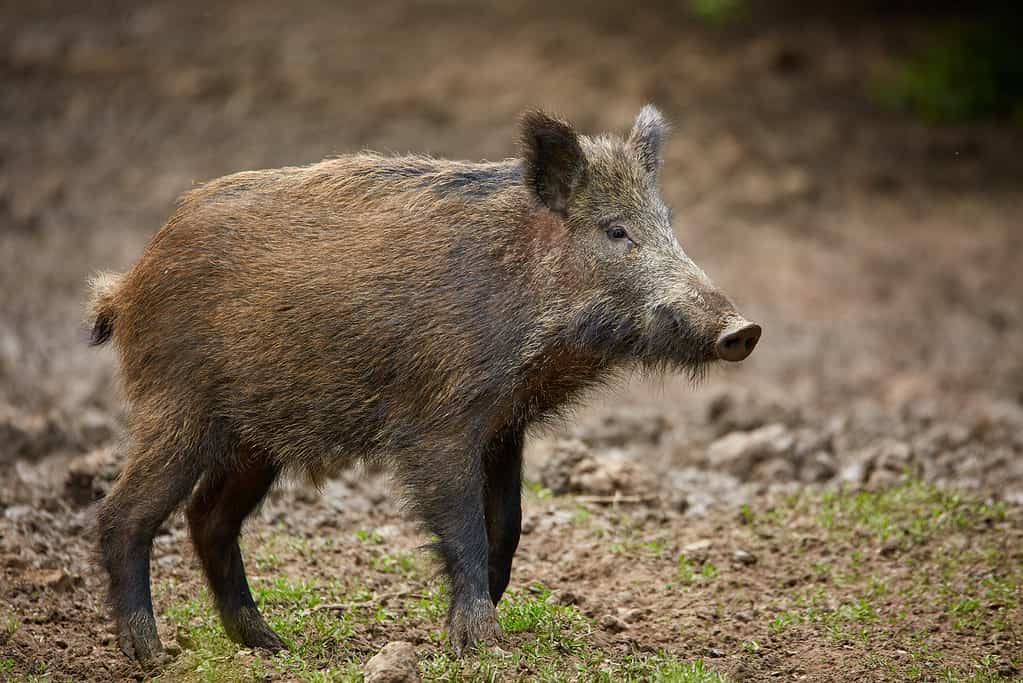
Hogs can be harvested at day or night on private land.
©Slatan/Shutterstock.com
Why Hunt Hogs?
Wild hogs have extremely high reproduction rates. To be able to control the species, 70 to 75% of wild hogs need to be harvested. As of the last estimated stats, hunters are harvesting only about half that percentage, so the population is consistently increasing. Pigs are sexually mature after a year of age and can start breeding at that time. They usually live to around five years old and are able to have two litters every year. In each litter, they can have up to 13 piglets. With that logic, one female hog is capable of reproducing around 104 more hogs in its lifetime.
Those reproduction rates are insanely high, making hogs amongst some of the fastest-breeding animals on earth. This is one reason why hunting hogs is so important for keeping the ecosystem balanced.

One hog is capable of reproducing around 104 babies in its lifetime.
©iStock.com/1448628063
Expensive Damage
Hogs are nuisance animals because they cause crop damage and can be dangerous to humans. They uproot plants, which can affect farmers and the food supply. They also can destroy roadways and structures. The Louisiana State University AgCenter states that wild hogs cause around $76 million in agricultural damage annually for the state. Most if not all damage is done by hogs’ tusks, which are called “cutters”. All hogs are destructive and even the females of the species have tusks.
The Affects on Wildlife
Wild boars are an invasive species. They compete for food sources like fruits, nuts, and seeds with native species. They also prey on native animals like reptiles, bird eggs, and mammals, including deer fawns. The hogs can also displace native species by taking their land and destroying their nests and breeding grounds.

Both male and female wild hogs have tusks.
©WildMedia/Shutterstock.com
Disease
Hogs carry a few different diseases that can impact native wildlife as well as humans. At least 5% of the hogs in Louisiana are positive carriers of swine brucellosis. This disease is a blood illness that affects swine and can potentially affect humans. It spreads easily amongst species through the ingestion of infected animals or through their fluids. The hogs also can transmit it to one another through mating, which is likely how so many pass the infection.
In hogs, the disease can cause abortion, sterility, lameness, and stillborn or weak piglets. People who are exposed to hogs with these diseases must take proper precautions and follow public health experts’ advice. It’s important to avoid touching the wild hogs without protection and to prevent any fluids from entering cuts.
Wild hogs are carriers of fleas, ticks, and lice, which also carry multiple diseases. Some of these diseases are very dangerous for humans, like anthrax and tuberculosis. In short, hogs are carriers of many diseases and parasites, making them pests that only cause more damage as their populations increase.
Bacon
While you may be concerned after learning what diseases hogs carry, they are perfectly safe to cook and eat. As long as their meat is cleaned and cooked properly, heated to 165°F, they can be eaten. In fact, their meat won’t taste too much different than what you get from the supermarket. Many people like the gamey flavor of wild boar meat, while others prefer commercial hogs only. Whether or not you use hog meat for bacon, hunting hogs is important to control their population.
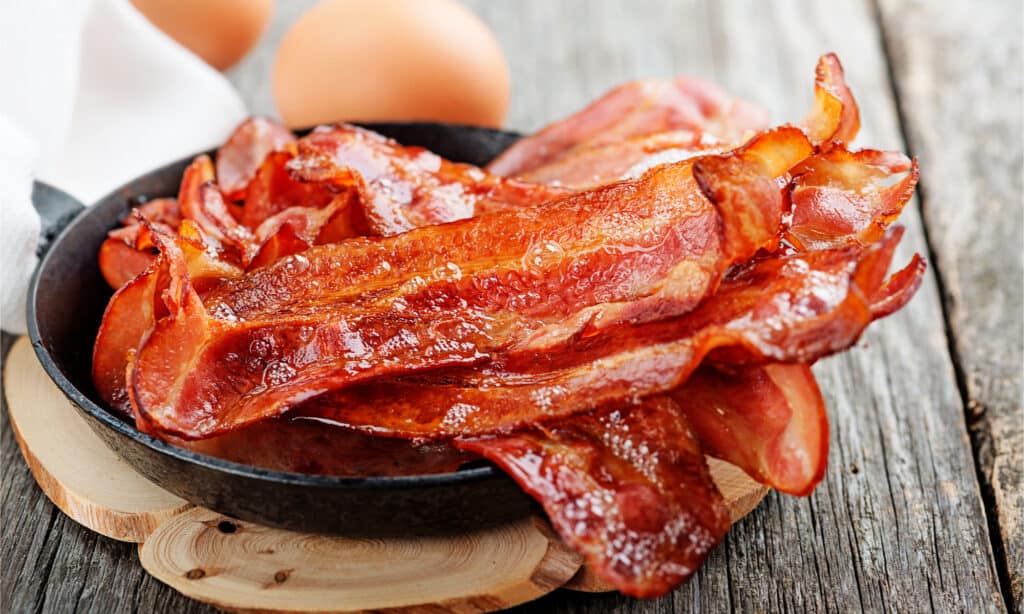
Bacon is a great and safe way to use wild hog meat.
©nelea33/Shutterstock.com
The photo featured at the top of this post is © Slatan/Shutterstock.com
Thank you for reading! Have some feedback for us? Contact the AZ Animals editorial team.



